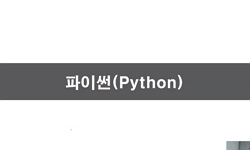Purpose: The purpose of this study was to investigate the availability of software for rehabilitation with the Kinect sensor by presenting an efficient algorithm based on machine learning when classifying the motion data of the PNF pattern if the subj...
http://chineseinput.net/에서 pinyin(병음)방식으로 중국어를 변환할 수 있습니다.
변환된 중국어를 복사하여 사용하시면 됩니다.
- 中文 을 입력하시려면 zhongwen을 입력하시고 space를누르시면됩니다.
- 北京 을 입력하시려면 beijing을 입력하시고 space를 누르시면 됩니다.

Motion Recognition for Kinect Sensor Data Using Machine Learning Algorithm with PNF Patterns of Upper Extremities
한글로보기https://www.riss.kr/link?id=A103888422
- 저자
- 발행기관
- 학술지명
- 권호사항
-
발행연도
2015
-
작성언어
Korean
- 주제어
-
등재정보
KCI등재
-
자료형태
학술저널
- 발행기관 URL
-
수록면
214-220(7쪽)
-
KCI 피인용횟수
0
- 제공처
-
0
상세조회 -
0
다운로드
부가정보
다국어 초록 (Multilingual Abstract)
Purpose: The purpose of this study was to investigate the availability of software for rehabilitation with the Kinect sensor by presenting an efficient algorithm based on machine learning when classifying the motion data of the PNF pattern if the subjects were wearing a patient gown.
Methods: The motion data of the PNF pattern for upper extremities were collected by Kinect sensor. The data were obtained from 8 normal university students without the limitation of upper extremities. The subjects, wearing a T-shirt, performed the PNF patterns, D1 and D2 flexion, extensions, 30 times; the same protocol was repeated while wearing a patient gown to compare the classification performance of algorithms. For comparison of performance, we chose four algorithms, Naive Bayes Classifier, C4.5, Multilayer Perceptron, and Hidden Markov Model. The motion data for wearing a T-shirt were used for the training set, and 10 fold cross-validation test was performed.
The motion data for wearing a gown were used for the test set.
Results: The results showed that all of the algorithms performed well with 10 fold cross-validation test. However, when classifying the data with a hospital gown, Hidden Markov model (HMM) was the best algorithm for classifying the motion of PNF.
Conclusion: We showed that HMM is the most efficient algorithm that could handle the sequence data related to time. Thus, we suggested that the algorithm which considered the sequence of motion, such as HMM, would be selected when developing software for rehabilitation which required determining the correctness of the motion.
참고문헌 (Reference)
1 임재길, "스프린터와 스케이터를 이용한 고유수용성촉진법 패턴운동이 뇌졸중 환자의 균형 및 보행 기능에 미치는 효과" 대한물리치료학회 26 (26): 249-256, 2014
2 김지호, "기울기와 위치 정보를 이용한 손동작기반 실시간 숫자 인식기 구현" 한국정보처리학회 2 (2): 199-204, 2013
3 Clark RA, "Validity of the microsoft kinect for assessment of postural control" 36 (36): 372-377, 2012
4 Bonnechere B, "Validity and reliability of the kinect within functional assessment activities : Comparison with standard stereophotogrammetry" 39 (39): 593-598, 2014
5 Vikramkumar, B V, "Trilochan. Bayes and naive bayes classifier" 1404 : 933-, 2014
6 Windolf M, "Systematic accuracy and precision analysis of video motion capturing systems--exemplified on the vicon-460 system" 41 (41): 2776-2780, 2008
7 이경미, "SVM을 이용한 동적 동작인식 : 체감형 동화에 적용" 한국콘텐츠학회 13 (13): 64-72, 2013
8 Son J, "Rule selection method in decision tree models" 2013 (2013): 13-23, 2013
9 Yang Y, "Reliability and validity of kinect rgb-d sensor for assessing standing balance" 14 (14): 1633-1638, 2014
10 정동훈, "Reliability and Validity of the CAP for Computer Access Assessment of Persons with Physical Disabilities" 대한물리치료학회 27 (27): 30-37, 2015
1 임재길, "스프린터와 스케이터를 이용한 고유수용성촉진법 패턴운동이 뇌졸중 환자의 균형 및 보행 기능에 미치는 효과" 대한물리치료학회 26 (26): 249-256, 2014
2 김지호, "기울기와 위치 정보를 이용한 손동작기반 실시간 숫자 인식기 구현" 한국정보처리학회 2 (2): 199-204, 2013
3 Clark RA, "Validity of the microsoft kinect for assessment of postural control" 36 (36): 372-377, 2012
4 Bonnechere B, "Validity and reliability of the kinect within functional assessment activities : Comparison with standard stereophotogrammetry" 39 (39): 593-598, 2014
5 Vikramkumar, B V, "Trilochan. Bayes and naive bayes classifier" 1404 : 933-, 2014
6 Windolf M, "Systematic accuracy and precision analysis of video motion capturing systems--exemplified on the vicon-460 system" 41 (41): 2776-2780, 2008
7 이경미, "SVM을 이용한 동적 동작인식 : 체감형 동화에 적용" 한국콘텐츠학회 13 (13): 64-72, 2013
8 Son J, "Rule selection method in decision tree models" 2013 (2013): 13-23, 2013
9 Yang Y, "Reliability and validity of kinect rgb-d sensor for assessing standing balance" 14 (14): 1633-1638, 2014
10 정동훈, "Reliability and Validity of the CAP for Computer Access Assessment of Persons with Physical Disabilities" 대한물리치료학회 27 (27): 30-37, 2015
11 Shotton J, "Real-time human pose recognition in parts from single depth images" 1297-1304, 2011
12 Rohr K., "Incremental recognition of pedestrians from image sequences. Computer Vision and Pattern Recognition, 1993" 8-13, 1993
13 Della Croce U, "Human movement analysis using stereophotogrammetry. Part 4: Assessment of anatomical landmark misplacement and its effects on joint kinematics" 21 (21): 226-237, 2005
14 Zhou H, "Human motion tracking for rehabilitation—a survey" 3 (3): 1-18, 2008
15 Sin BK, "Hmm toolbox development and analysis and comparison of hmm types" 2010 (2010): 9-10, 2010
16 이근호, "Effects of Virtual Reality Exercise Program on Balance in Multiple Sclerosis Patients" 대한물리치료학회 27 (27): 61-67, 2015
17 박성두, "Comparison of Balance and Fall Eff icacy of Virtual Reality Program in Elderly Women with Fall Experience" 대한물리치료학회 26 (26): 430-435, 2014
18 Hwang SS, "Basic concept of pnf and its approach for sports injury" 2002 (2002): 140-143, 2002
19 Rabiner L, "A tutorial on hidden markov models and selected applications in speech recognition" 77 (77): 257-286, 1989
20 Chang YJ, "A kinect-based system for physical rehabilitation : A pilot study for young adults with motor disabilities" 32 (32): 2566-2570, 2011
21 Pastor I, "A feasibility study of an upper limb rehabilitation system using kinect and computer games" 1286-1289, 2012
동일학술지(권/호) 다른 논문
-
- 대한물리치료학회
- Kang, Jeong-Il
- 2015
- KCI등재
-
- 대한물리치료학회
- Yang, Dae-jung
- 2015
- KCI등재
-
- 대한물리치료학회
- Yun, Sung-Joon
- 2015
- KCI등재
-
- 대한물리치료학회
- Lee, Juhwan
- 2015
- KCI등재
분석정보
인용정보 인용지수 설명보기
학술지 이력
| 연월일 | 이력구분 | 이력상세 | 등재구분 |
|---|---|---|---|
| 2028 | 평가예정 | 재인증평가 신청대상 (재인증) | |
| 2022-01-01 | 평가 | 등재학술지 유지 (재인증) |  |
| 2019-01-01 | 평가 | 등재학술지 유지 (계속평가) |  |
| 2016-01-01 | 평가 | 등재학술지 유지 (계속평가) |  |
| 2015-03-31 | 학회명변경 | 영문명 : The Korean Society of Physical Therapy -> The Journal of Korean Physical Therapy |  |
| 2012-01-01 | 평가 | 등재학술지 선정 (등재후보2차) |  |
| 2011-01-01 | 평가 | 등재후보 1차 PASS (등재후보1차) |  |
| 2010-01-01 | 평가 | 등재후보학술지 유지 (등재후보1차) |  |
| 2008-01-01 | 평가 | 등재후보학술지 선정 (신규평가) |  |
| 2007-07-06 | 학회명변경 | 영문명 : The Korean Society Of Physical Therapy -> The Korean Society of Physical Therapy |
학술지 인용정보
| 기준연도 | WOS-KCI 통합IF(2년) | KCIF(2년) | KCIF(3년) |
|---|---|---|---|
| 2016 | 0.89 | 0.89 | 0.78 |
| KCIF(4년) | KCIF(5년) | 중심성지수(3년) | 즉시성지수 |
| 0.72 | 0.67 | 0.431 | 0.22 |




 KCI
KCI






